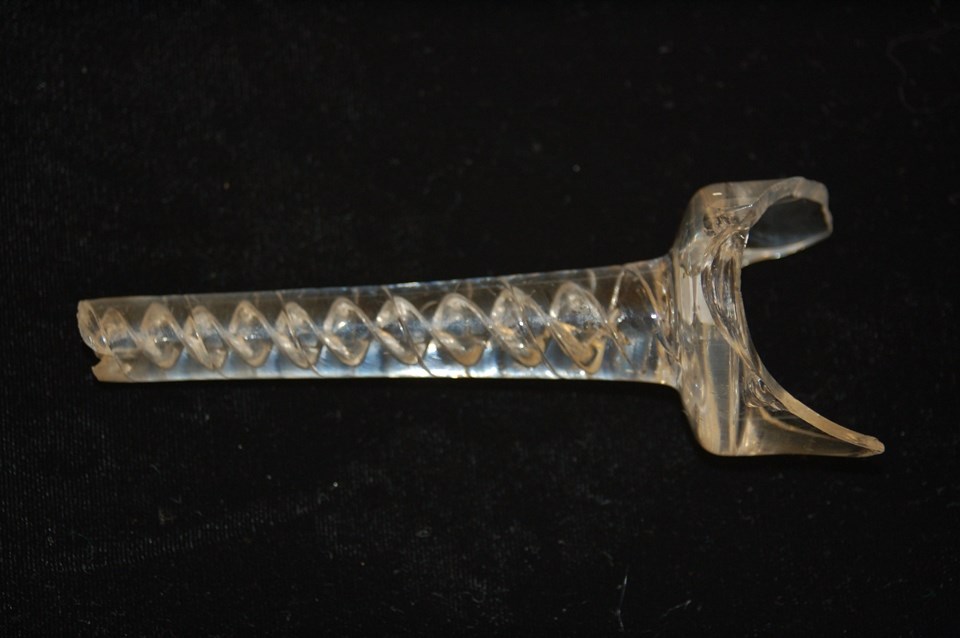Last updated: December 6, 2017
Article
Stemware at Fort Vancouver

NPS Photo
By Robert Cromwell, Chief of Interpretation
Among the myriad of shapes and forms that glass can be formed into, some of the most elegant functional forms can be classified as "stemwares." The term "stemware" derives from the fact that most glassware vessels in this category have a body sitting upon a stem that attaches to a foot, upon which the vessel stands (although many forms do not have a stem). Stemwares can be loosely categorized as glass usually used on the table and associated with food or drink, although they can also be associated with decorative glassware, such as vases. Common stemware forms from the 19th century in the Fort Vancouver National Historic Site archaeological collection include: carafes, cruets, decanters, dessert glasses, mugs/cups, pitchers, drinking glasses, serving glasses, and tumblers.
Among the myriad of shapes and forms that glass can be formed into, some of the most elegant functional forms can be classified as "stemwares." The term "stemware" derives from the fact that most glassware vessels in this category have a body sitting upon a stem that attaches to a foot, upon which the vessel stands (although many forms do not have a stem). Stemwares can be loosely categorized as glass usually used on the table and associated with food or drink, although they can also be associated with decorative glassware, such as vases. Common stemware forms from the 19th century in the Fort Vancouver National Historic Site archaeological collection include: carafes, cruets, decanters, dessert glasses, mugs/cups, pitchers, drinking glasses, serving glasses, and tumblers.

NPS Photo
The glass blowers of this age could manufacture stemwares of incredible complexity. Vessels could be formed from one gather of glass, or could incorporate two, three, or four gathers of glass. Each gather required individual skills, and glass blowers worked in a technical dance of unison, constantly turning the molten vessel on the blow pipe to prevent it from collapsing under its own weight. Many vessels were fire-polished to an incredible sheen, and once cooled, were sent to glass decorators who could engrave patterns with cutting wheels or diamond points; and even acid etch, enamel, or gild individual elements.

NPS Photo
Interestingly, although these objects were typically associated with the upper class gentlemen who would have resided within the fort walls, many stemware fragments have also been excavated from households in the fort's employee Village.
